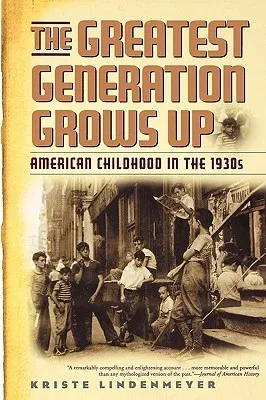What was it like growing up in the Great Depression, and how did
America's youngest citizens contribute to the history of that fateful
decade? In The Greatest Generation Grows Up, Kriste Lindenmeyer shows
that the experiences of depression-era children help us understand the
course of the 1930s as well as the history of American childhood. For
the first time, she notes, federal policy extended childhood dependence
through the teen years while cultural changes reinforced this ideal of
modern childhood. Grade-based grammar schools and high schools expanded
rapidly, strengthening age-based distinctions among children and
segregating them further from the world of adults. Radio broadcasters,
filmmakers, and manufacturers began to market their products directly to
children and teens, powerfully linking consumerism and modern childhood.
In all, the thirties experience worked to confer greater identity on
American children, and Ms. Lindenmeyer's story provides essential
background for understanding the legacy of those men and women whom Tom
Brokaw has called "America's greatest generation." While many children
suffered terribly during these years-and are remembered vividly in the
Farm Security Administration's stunning photographs of the era-Ms.
Lindenmeyer argues that an exclusive focus on those who were ill-housed,
ill-fed, and ill-clothed neglects the contributions and widely varied
experiences of American youngsters. The decade's important changes
touched the lives of all children and teenagers. By 1940, the image of
an idyllic modern childhood had been strengthened in law and confirmed
in culture by the depression years. With 21 black-and-white
illustrations.

